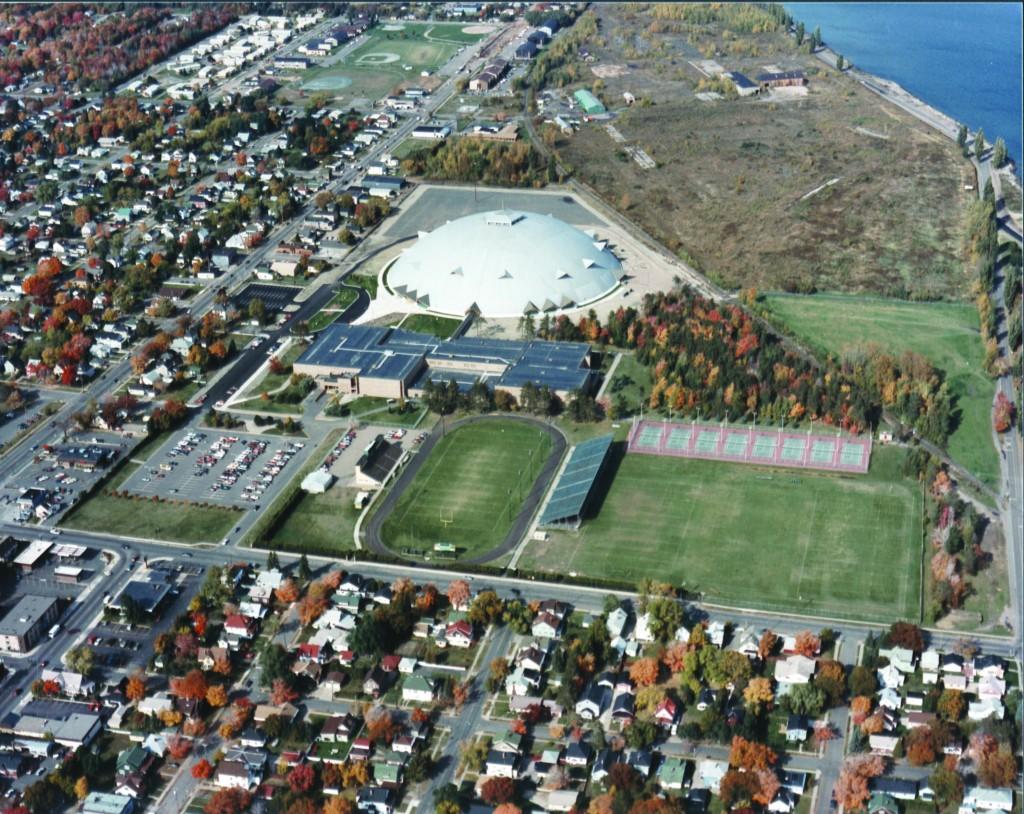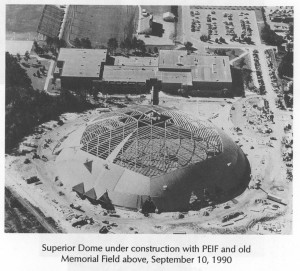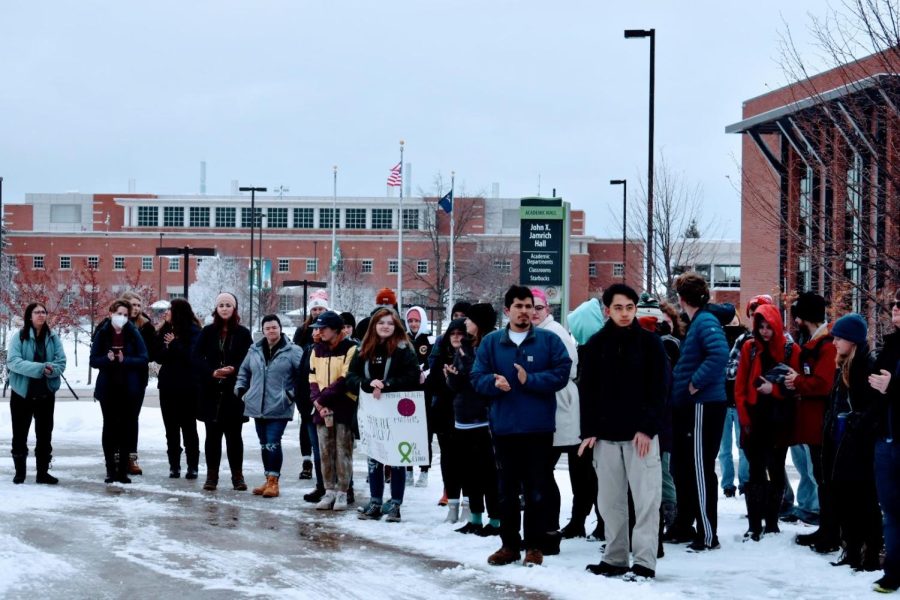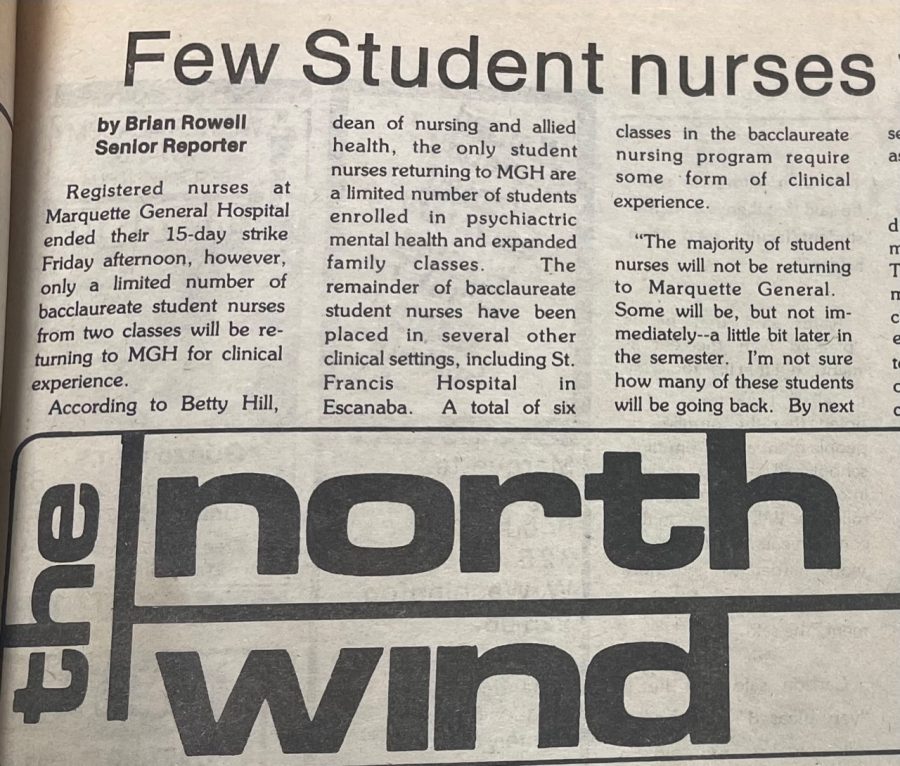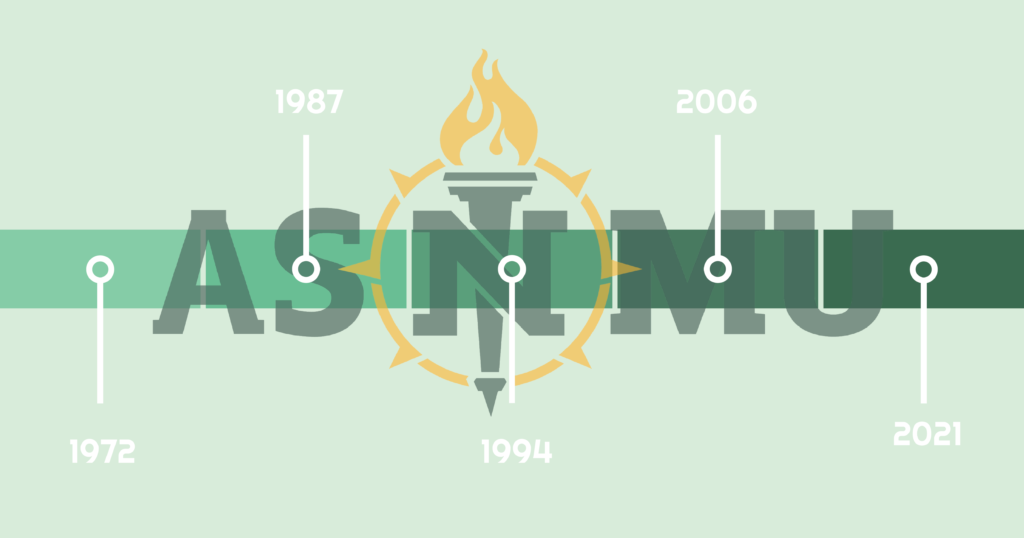A lot of things have changed over the years at Northern. For instance, students don’t dine with the president in their residence hall, kidnap fellow students and leave them stranded on islands to usher them into senior year, or swat each other with brooms on a balance beam until one falls into the Dead River (rites of passage from another era).
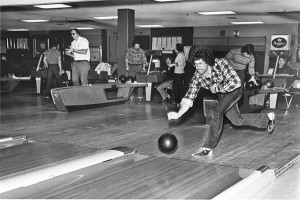
When NMU began in 1899 as Northern State Normal School with 61 students, the campus had none of the buildings we currently do and it was a school for teachers. Since then, the university has expanded to include 180 degree programs, a population of over 9,000 students and more than 50 facilities.
English professor Paul Lehmberg, finishing his 36th year at NMU, said the campus is more dense with buildings and students than it was when he arrived.
“It feels a lot different than it did years ago,” Lehmberg said. “You used to be able to look off to the west and see hills. I miss the open space. I miss the trees, but it’s good to have growth. It’s a mixed bag.”
Russel Magnaghi, the second official university historian, professor of history and author of NMU’s encyclopedia “A Sense of Time,” has been on campus for nearly 45 years.
He said NMU’s first building, erected on 20 acres donated by John Longyear and Frederick Ayers, was South Hall (later renamed Longyear). It was constructed with Lake Superior sandstone and stood where Cohodas Administrative Center is. The Peter White Hall of Science and the Administration building (renamed Kaye Hall in 1949) were added in the same style, he said.
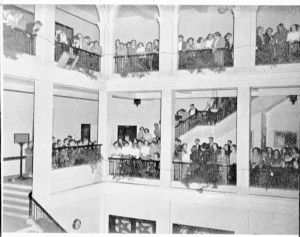
Kaye Hall was central to university life and a very social, congenial space, Magnaghi said. It housed the president’s office, classes and had a large central atrium with overlooking balconies where students and faculty would mix.
These original buildings remained in use until 1972 when they were controversially torn down after the fire marshal found them hazardous, Magnaghi said.
“We’d basically outgrown it,” Magnaghi said. “There were people who had offices in what had been restroom facilities and in closets. You’d walk across the wooden floor and the whole room would creak.”
He said the problem was the state legislation at that time would not put money into renovating a building and the president favored what is now Cohodas.
“So those three buildings plus the former Olson Library were torn down,” he said. “The debris is buried out on Big Bay Road this side of the railroad tracks.”
During the Edgar Harden presidency (1956-67), the school experienced immense growth, jumping from less than 2,000 in 1960 to over 8,000 students in 1970, according to Magnaghi’s encyclopedia. Magnaghi said this was happening all over the country, and it was actually a great headache for the administrators.
“A wall of students came down the hall wanting classes, and we didn’t have the personnel to process them,” he said.
Harden was responsible for seeing a large number of our current buildings erected in response to the growing enrollment, and John Jamrich (president 1968-1983) continued that trend.
“When I assumed the presidency, it was my compelling goal to transform Northern from a college to a university, not just on legislative paper, but in genuine reality,” Jamrich said in an email. “That required the expansion of existing programs and establishing new academic majors.“
The University Center was constructed in 1960 and expanded in 1964. A bowling alley was added during an addition in 1966 where the bookstore currently is, Magnaghi said.
“If you look at the store, it’s kind of long,” he said. “There’s a reason for that. Bowling was a hot-ticket sport, you might say. Marquette had three or four bowling alleys. Bowling club teams were called the Bums, the Oddballs, the Fivekegs…The teams remained active until ‘73.”
In 1969 NMU’s bowling team, led by Mike Bauman, won the national college team championship, Magnaghi said.
The addition of the Physical Education Instructional Facility (PEIF) in 1976 attracted the attention of Phil Watt, a young faculty member now considered one of the premier scientists of rock climbing, Magnaghi said.
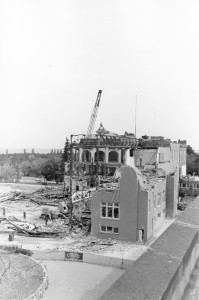
“He came up here because of the fine facilities,” he said. “And he wrote articles still used today as the baseline for studying the physiology of rock climbing.”
With Cohodas going up, the Harden Learning Resource Center (LRC), the PEIF, theater and others, Magnaghi said it was a time of great development and improvement.
“These things were like shots in the arm,” he said. “I just came from the PEIF and it was packed with students. It’s wonderful to see. I remember when I first came here, there was no gym equipment. We had to go play racquetball in some dumpy building up in North Marquette in one of the side streets.”
Jamrich said he was honored when the Board of Trustees named the John X. Jamrich Instructional Facility, and now, is especially moved with the honor of having his name carried to the new building.
“Our guiding logo was ‘Working to put tomorrow in good hands,’” he said. “And I feel a level of sincere gratification as I read about the accomplishments of our graduates.”






















